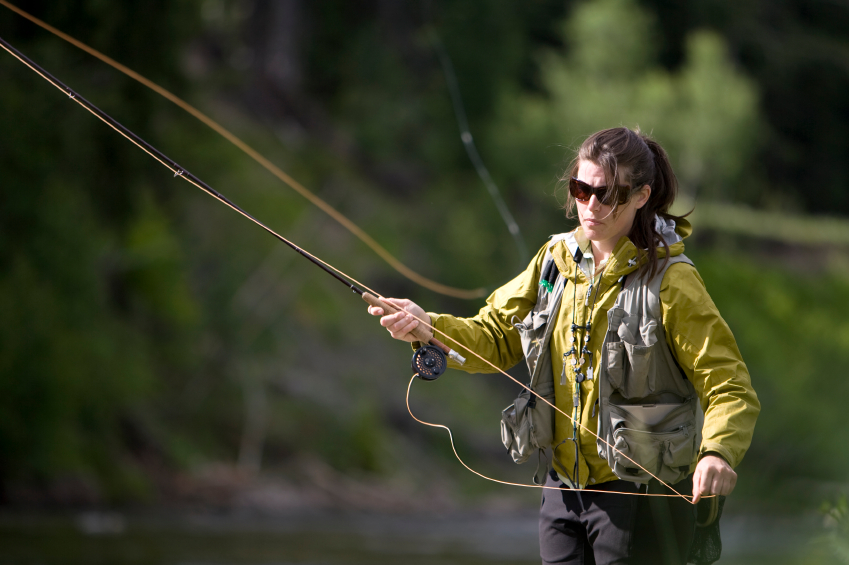Fishing resources and tips for the empowered female angler.
15 Fly Fishing Terms You Need to Know
February 18, 2013
Fishing, in general, seems to have its own unique language. When one angler says to another, “I got skunked the other day,” the meaning of that phrase is pretty clear to both of them. However, someone completely unfamiliar with fishing may think that same phrase has something to do with one of those black and white mammals that’s known for having a strong odor.
My point is that once you graduate from general fishing terminology, and make the decision to take up fly fishing, there is a list of basic fly fishing terms that you’ll want to learn.
Here are 15 important fly fishing terms that you may want to learn, as provided by author and fly casting instructor Joe Mahler:
- Casting Arc – Angle between the rods position at the beginning of the casting stroke and the rods position at the end of the casting stroke.
- Casting Stroke – Movement of the hand and arm to apply power to the rod, excluding any pick-up, drift, or follow-through movements. This is the movement made in false casting. The casting stroke is made in either the backwards or forward direction.
- Creep – To allow the rod to move forward (without power) after the completion of the back cast and before the unrolling back loop has straightened. This is a serious fault in fly casting.
- Drift – The repositioning of the rod backward (without power) after the completion of the back cast and before the unrolling back loop has straightened. This is a technique used by experienced casters to gain a longer forward casting stroke.
- Fly Casting – The use of a flexible rod to propel a weighted line, in order to present an essentially weightless fly.
- Follow-Through – Second, separate motion of lowering the arm and rod toward the water (without power), which follows the complete stop at the end of the forward casting stroke.
- Line Hand – Hand which anchors and manipulates the fly lines during casting and fishing. The hand opposite of the rod hand.
- Loading the Rod – The bending of the rod through the correct application of power.
- Loop – The shape of the leading edge of the unrolling fly line during a cast.
- Good Loop – When referring to conventional overhead casting, a good loop shape is one which the top and bottom strands or “legs” are relatively close together and basically parallel. The leading edge of the loop resembles a U or V on its side. In roll casting a good loop resembles a flattened oval.
- Wide Loop/Open Loop – A loop in which the top and bottom strands or legs are widely separated. This is often a fault in casting, but can be useful as in casting heavy flies or multiple flies.
- Tailing Loop/Crossed Loop – A loop in which the top strand or leg of the fly line falls below the bottom strand. This is always a fault in fly casting and leads to “wind knots” that will tangle the line when the two strands meet.
- Pause – The elapse time or “wait time” after the application of power and complete stop in one direction while you wait for the loop to unroll and straighten. When the line straightens, the pause is complete and you apply power to the opposite direction to begin the next casting sequence of power — stop, pause/power — stop — pause.
- Pick Up Movement – The movement of the arm and hand in order to lift the line from the water before making the power stroke of the back cast.
- Turnover Point – (a) The point at which the tip of the rod moves past 12:00 (noon) as it moves through the casting arc, and begins to point in the direction of the cast. (b) The point at which the rod reverses its bend from one direction (loaded and pulling line through the air) to the other direction (unloading and converting energy to the line to form the loop). This occurs at the stop and the describing term for this counter-flex is rebound.
Source: Joe Mahler, Fly Casting Instructor and Author of “Essential Knots and Rigs for Trout” and “Essential Knots and Rigs for Saltwater.” Purchase Joe’s books at Bass Pro Shops or Cabela’s and visit his website at http://www.joemahler.com/.
